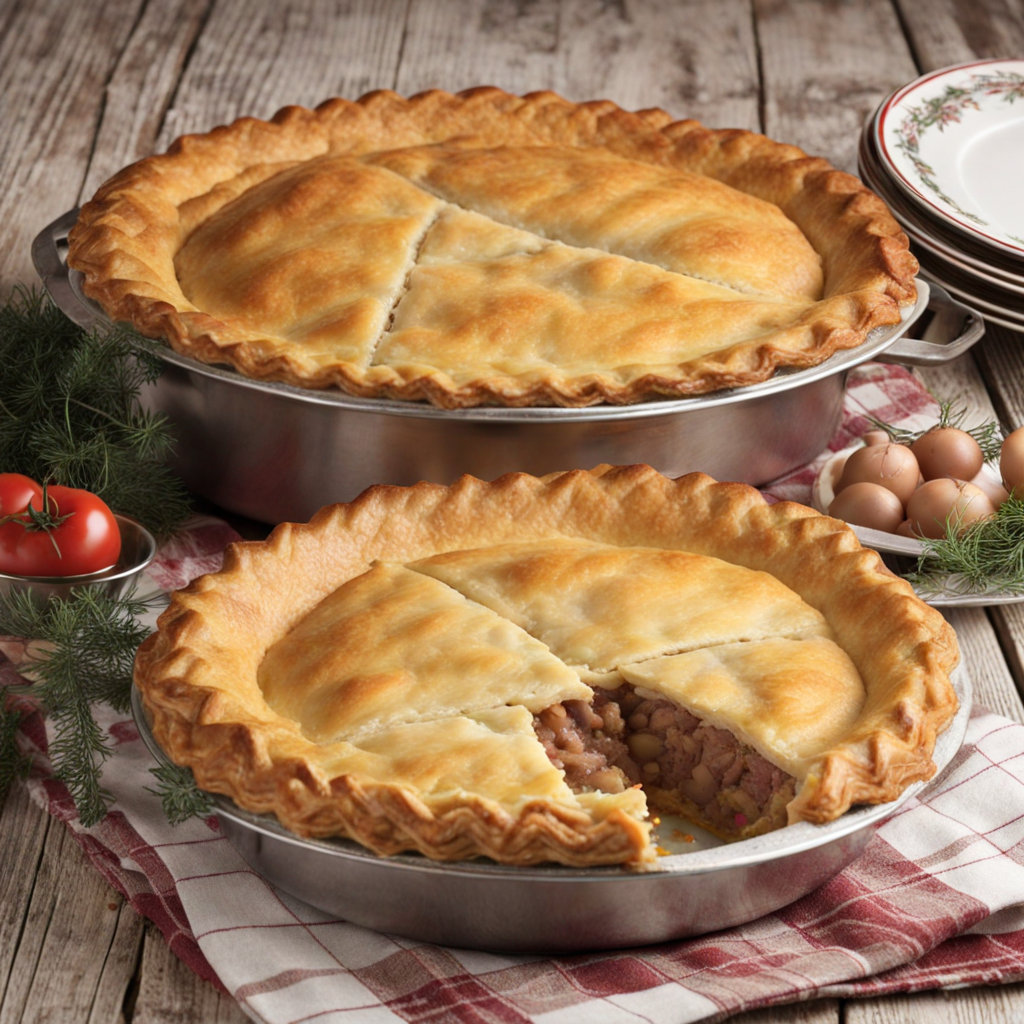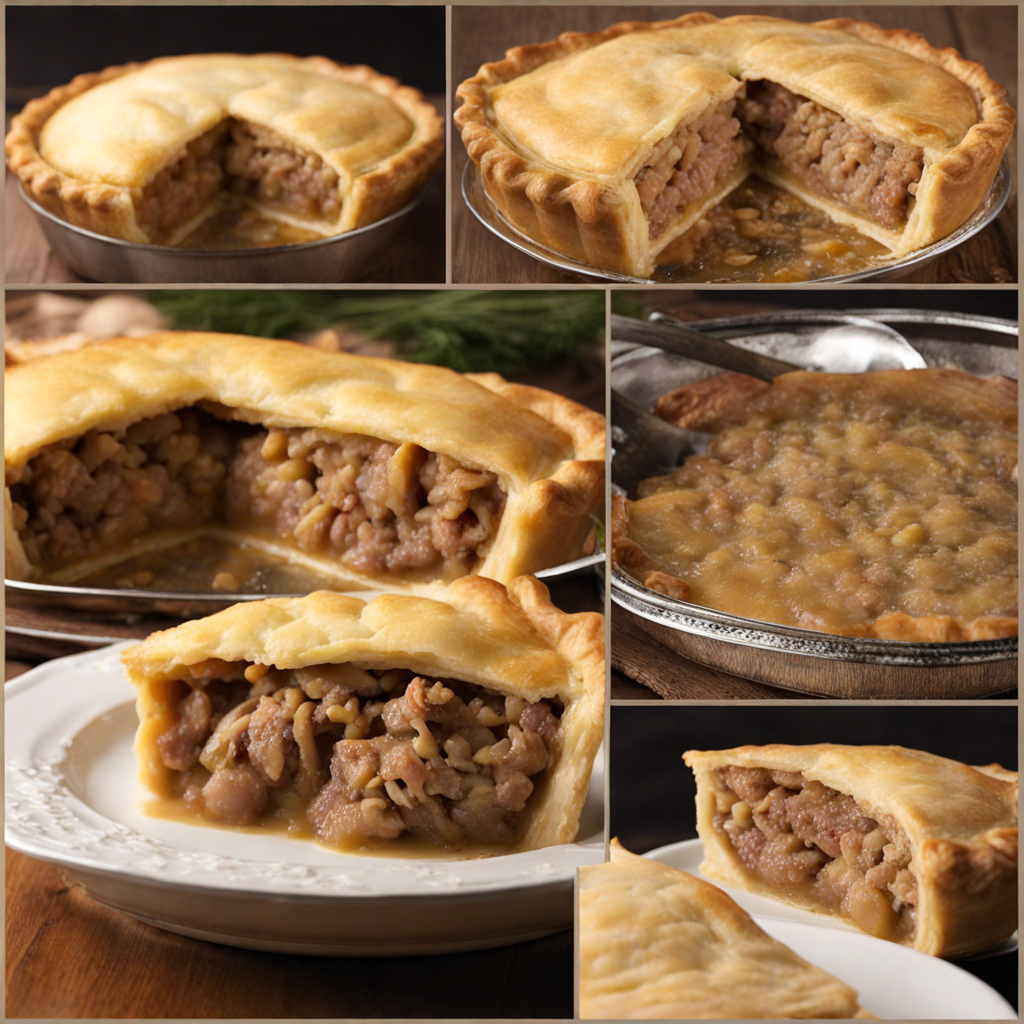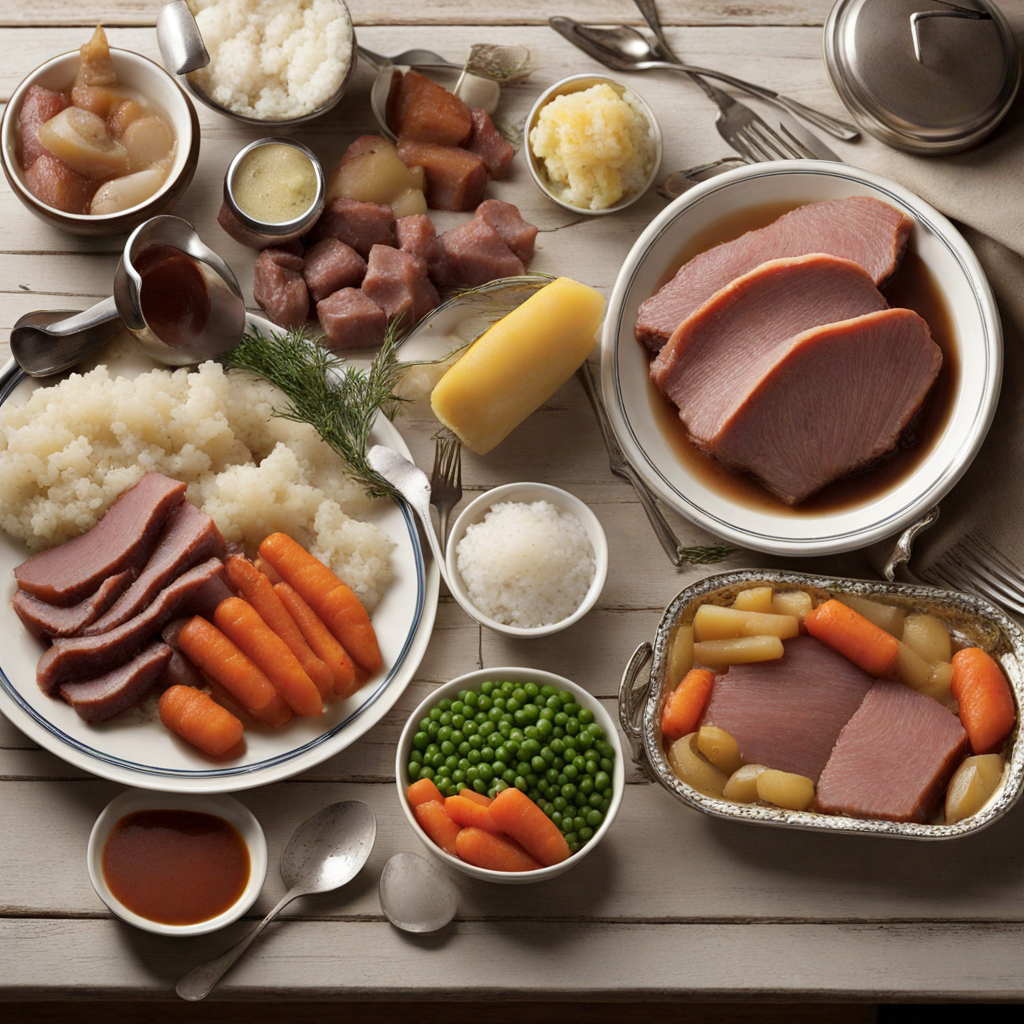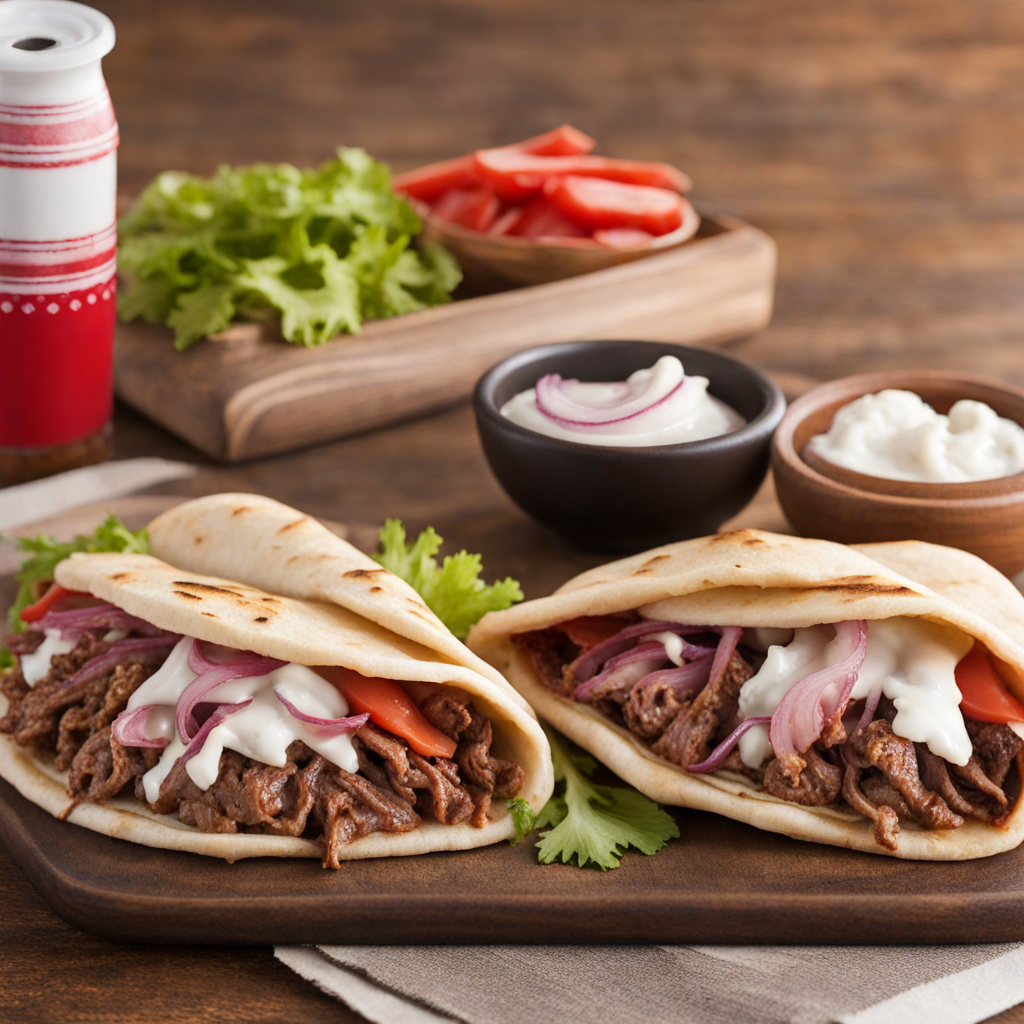Cipaille
Cipaille, also known as "cipâtes" or "cipailles," is a traditional Canadian dish hailing from Quebec, characterized by its savory layers of meat and flaky pastry. This hearty pie is typically made with a combination of meats such as beef, pork, and sometimes game, all slow-cooked to perfection. The filling is seasoned with a mix of herbs and spices, which infuse the dish with robust flavors. A rich broth is often added, creating a succulent and flavorful experience with each bite. The layering of ingredients not only enhances the taste but also creates a visual feast in its golden-brown crust. What sets Cipaille apart is its unique cooking method, which involves layering the meat and pastry in a deep dish, allowing the flavors to meld beautifully over time. The pastry crust is usually made from a simple dough, which becomes perfectly crisp while encasing the tender filling. Traditionally, Cipaille is baked in a large, deep dish, making it a perfect centerpiece for gatherings and family meals, often enjoyed during colder months as a comforting dish. This dish is more than just a meal; it’s a celebration of Quebec's culinary heritage. Each family may have its own variation, adding personal touches like wild mushrooms or local herbs, making it a versatile recipe that can be adapted to seasonal ingredients. The experience of enjoying Cipaille is truly special, as it brings together the warmth of home cooking, the richness of Canadian culture, and the delightful mingling of flavors that invite you to savor every bite.
How It Became This Dish
The Rich History of Cipaille: A Culinary Treasure of Canada Cipaille, also known as cipâtes or cipaille, is a traditional meat pie with roots deeply embedded in the culinary heritage of Canada, particularly in Quebec and the Acadian regions. This hearty dish, often likened to a savory pot pie, is a testament to the resourcefulness and creativity of the early settlers and Indigenous peoples who shaped the food culture of this vast land. Its history is a fascinating tale of survival, cultural exchange, and the evolution of regional cuisine. #### Origins: A Fusion of Cultures The origins of cipaille can be traced back to the 17th century, when French settlers arrived in New France, what is now modern-day Canada. The settlers brought with them a wealth of culinary traditions from regions like Normandy and Brittany, where hearty meat pies were commonplace. These early settlers faced the harsh realities of a new and unforgiving land, characterized by long winters and limited access to fresh produce. In response, they adapted their recipes to incorporate local ingredients and indigenous cooking techniques. Cipaille’s roots can also be found in the culinary practices of Indigenous peoples, who utilized available resources to create nourishing meals. The traditional use of wild game, such as moose, deer, and rabbit, along with local vegetables and herbs, provided a rich array of flavors that would find their way into the cipaille. The blending of French culinary techniques with Indigenous ingredients created a unique dish that was hearty enough to sustain families through the cold months. #### Cultural Significance Cipaille is more than just a dish; it is a symbol of the cultural identity of the French Canadian and Acadian communities. It embodies the spirit of sharing and community, often served at family gatherings, celebrations, and festive occasions. Traditionally, cipaille was prepared in large quantities, allowing families to enjoy the meal over several days. The pie’s layered structure, typically consisting of various meats and vegetables encased in a flaky pastry, reflects the abundance of the land and the importance of resourcefulness in a time when food preservation was vital for survival. The dish evolved into a special holiday food, particularly associated with celebrations like Christmas and New Year. For many, the preparation of cipaille is a cherished family tradition that brings generations together. Each family often has its own recipe, passed down over the years, which may vary in ingredients and method, highlighting the regional differences and personal touches that make this dish unique. #### The Making of Cipaille Traditionally, cipaille is made with a variety of meats, including beef, pork, chicken, and game, layered between sheets of pastry. The preparation begins with a rich broth, often seasoned with local herbs and spices, which is poured over the stacked layers of meat and vegetables. The pie is then baked until the crust is golden brown, and the flavors meld together into a comforting, savory dish. While the classic cipaille recipe remains popular, modern interpretations have emerged, reflecting contemporary tastes and dietary preferences. Some versions substitute traditional meats with vegetarian options, incorporating lentils, mushrooms, and other hearty vegetables to create a plant-based alternative. This adaptability speaks to the enduring legacy of cipaille as a dish that can evolve while still honoring its rich history. #### Development Over Time As Canada evolved, so too did its culinary landscape. The industrial revolution brought about significant changes in food production and preservation, leading to the commercialization of many traditional dishes, including cipaille. Canned meats and frozen vegetables became more accessible, allowing for quicker preparation times and a broader range of ingredients. In the latter half of the 20th century, a renewed interest in traditional foods emerged, spurred by movements that emphasized local sourcing and sustainability. Chefs and home cooks alike began to revisit classic recipes, bringing cipaille back to the forefront of Canadian cuisine. This resurgence has been accompanied by a growing recognition of the cultural significance of traditional dishes, with cipaille often featured at food festivals, cultural events, and in restaurants that celebrate Canadian heritage. Today, cipaille is not only a beloved dish in Quebec and Acadian communities but has also garnered attention on the international stage. Culinary tourism has introduced this hearty pie to new audiences, eager to experience the flavors of Canadian culture. Cookbooks highlighting regional recipes and the rise of food blogs dedicated to traditional dishes have helped to preserve the story of cipaille, ensuring that this culinary treasure remains a vital part of Canada's gastronomic identity. #### Conclusion: A Living Tradition Cipaille stands as a symbol of Canada’s rich culinary heritage, reflecting the historical journeys of its people. It is a dish born from necessity, transformed by cultural exchanges, and celebrated as a timeless family tradition. As Canada continues to evolve, so too will cipaille, adapting to new tastes while holding onto the flavors and stories of the past. In a world increasingly captivated by globalization and fast food, cipaille serves as a reminder of the importance of heritage and the stories that food can tell. This dish encapsulates the warmth of family gatherings, the resilience of communities, and the rich tapestry of cultures that make up Canada. As more people discover and embrace this traditional meat pie, its legacy continues to thrive, ensuring that the history of cipaille is not just a thing of the past but a living tradition that will nourish future generations.
You may like
Discover local flavors from Canada







